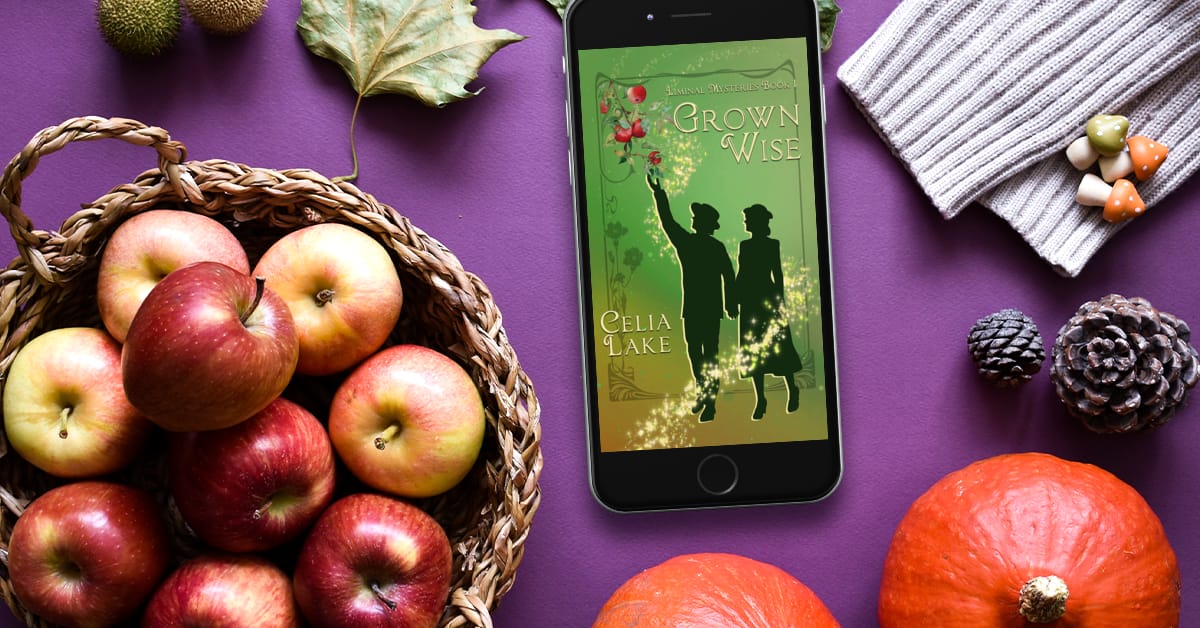As we approach Grown Wise, it seems handy to have a brief history of the Fortier family. At this point in the Albion books, we have four generations visible in some way. That’s quite a lot of time to work with.

The past
In the beginning, there were the Merovingians.
Well, not actually in the beginning. But when it comes to the Fortier family, that’s the most important part. The Merovingians were a dynasty among the Franks (roughly what is now France and Germany). You’re more likely to have heard of the Carolingians (and especially Charlemagne), unless you’ve got a particular interest in early mediaeval European history. Or, admittedly, some other quirks and odd eddies of tales.
There are, culturally, several interesting bits of magical lore associated with them. One has to do with how the dynasty began. The tale goes that a king’s wife bore a son fathered by a quinotaur named Merovech. (What’s a quinotaur? A bull-shaped magical beast, possibly with a tail like a merman.)
From Merovech came the dynasty, eventually. They were known as the “long-haired kings” for their custom of wearing their hair long, possibly for some magical theory reasons. The dynasty also has a number of tales related to dreams, visions, etc. being a driving force in certain decisions.
(If you’d like to know more about the Merovingians, I greatly enjoyed The Dark Queens: The Bloody Rivalry That Forged the Medieval World by Shelley Puhak when I read it last summer. The direct evidence for the two queens of the title is very slim. But Puhak discusses the sources she’s working from, and puts them in the larger context of the Merovingian world. Warning, comes with death, betrayal, war, battle, more betrayal, etc. approximately every other page for a lot of the book.)
At any rate, some of Albion’s families trace their lineage back to the Merovingians, mostly via the Norman Conquest. The Fortiers are one of the most prominent families to do so. (It does mean the family has a fondness for Merovingian names. I might possibly regret that at this point, given how many times I’ve had to type some of them now.) But it’s also shaped a fair bit of the family magic and traditions, some of which we get to see in various books.
The Arundel demesne
At some point around the Pact in the 1480s, the magical Fortier line split off from the non-magical lords. They established the Arundel demesne estate (distinct from Arundel Castle, which is still there) and claimed responsibility for the land magic of West Sussex. The estate runs alongside the River Arun between Amberley and Greatham (and of course, it’s magically protected and hidden). The family also hold a number of other fields, tenant farms, etc. in the area. Garin mentions at one point that there was a Fortier on the first Council in 1484.
The members of the family who go to Schola are uniformly in Fox House (until we get to Leo). Those who attend Schola are also in Dius Fidius, the most elite of the secret societies. Until we get to Ursula, who had other ideas about what to do with her time.
Vauquelin and Chrodechildis Fortier
The first people we see, chronologically, are Vauquelin and Chrodechildis Fortier. Chrodechildis came from another – though more recent – line of the Third Families, those who had particular ties to France in various forms.
Vauquelin Fortier was born in 1810. He married Chrodechildis (born the same year) in 1835. Together, they had three children: Clovis, Bradamante, and Dagobert. Vauquelin was a ritualist, when it came to magical specialities. He inherited the land magic from his father in 1840, relatively young. He remained Lord until his death in 1885 (nearly 5 years before the Mysterious Fields trilogy).
When the trilogy begins, Chrodechildis is still very much the matriarch of the family, decidedly in control of a number of matters. She certainly has many expectations about her children and what they should be doing with themselves.
The Fortier Mess
The Mysterious Fields trilogy takes place in 1889 and 1890. At this point, we have the next generation of the family in play (as well as the generation younger). These include Clovis, Bradamante, and Dagobert Fortier, along with their families.
Clovis
Clovis was born in 1836, and married Maylis in 1862. They have two children, Childeric (born 1865) and Sigbert (born 1869). They have been living at Arundel, the demesne estate, throughout their marriage, not least because of the expectation that Childeric would inherit the land magic in due course. If you’ve read the trilogy, you know that’s not how things go.
The Arundel manor house has two distinct wings, joined by a central wing. Chrodechildis has kept the wing traditionally used by the Lord and Lady (a sitting room on the ground floor, a bedchamber and other space on the first floor), while Clovis and Maylis have rooms in the other wing on the first floor, with their sons and some guest rooms above on the second.
Clovis had a solid magical education, with a focus on duelling magic and sympathetic magic. However, he’s far less of an expert in his field than his father was in ritual magics, and it shows.
Bradamante
Bradamante was born in 1840. As a daughter, it was always expected she’d marry out of the family. She marries Yves Nevill (born 1840) in 1860. As you might guess by her age, she did not do a formal magical apprenticeship. She was educated privately, with a focus on Flora and horticultural magics. Particularly the sort that lead to gardens planned with magical intentions or floral arrangements designed to evoke and encourage certain moods. Her husband is attentive, aware of the changes in social settings, and protective of his family’s long-term well-being.
They have three daughters, Rosine (born in 1862), Flora (born 1865), and Jacinthe (born 1870, and the only one of the three to attend Schola). Rosine marries and moves to France with her husband. They have a highly respected business producing delicate flower essences and oils. (One of their children is mentioned in Three Graces. And we’ll be seeing a little more of that line of the family in something to come.) Flora has three children (two daughters and then a son) and they move to Canada. Jacinthe marries Amalric Howard (seen briefly in Enchanted Net) shortly after leaving school. They have two children, born after she completes an apprenticeship in Incantation.
Dagobert
Dagobert is five years younger than Bradmante (born 1845), and he marries much later than his siblings did, even allowing for the age difference. He marries Laudine in 1878 when his siblings have already had their children.
Garin is born in 1880, and Isembard is born in 1890 (as seen in Elemental Truth). Isembard, for the record, is definitely a wanted child (there’ll be an extra, hopefully out soon, with more about Laudine’s thought process there). But the ten year gap – along with various family events – mean that there’s quite some emotional distance between them.
Laudine and Dagobert Fortier
Laudine’s family is quite well off, via family money and professional skills. Her father is a talisman maker, though of the sort who does not need to earn his keep by taking commissions he’s not interested in. They own multiple family properties. By the time the trilogy begins, Laudine and Dagobert have been living at one of them for some time.
(This is what everyone refers to as “The Essex House”. It’s a manor dating back to the Tudor period that’s actually rather larger than Arundel in terms of the house itself.)
For a number of reasons, Laudine and Dagobert live apart once Dagobert becomes Lord. Garin lives at Arundel with his father (though he’s shortly of an age to be away at tutoring school and then Schola), while Isembard grows up with his mother at the Essex House. Dagobert’s magical training is in alchemy. Following the events of the trilogy he focuses on theoretical work, often supporting an assistant who can test various ideas in the lab (in exchange for room, board, supplies, and a salary).
Dagobert lived in the west wing of the house (where his mother had previously been) with rooms for his sons and guests in the east wing. Both Laudine and Dagobert asked Alexander Landry to be a tutor to their sons in various ways. They give him a fair amount of free rein with the process, as well as giving him some amount of social support when it came to Great Family politics. Alexander joined the Council in 1897, helping establish some more solid foundations for his own life, while also suggesting a pathway for Garin.
Laudine dies in 1911 (right after Isembard turns 21), and Dagobert dies in 1913.
Garin and Isembard Fortier
Garin, as the older brother, has always felt the weight of the family on his shoulders. He is intensely intelligent (emphasis on ‘intense’ there), a skilled alchemist, and a highly trained duellist and fighter. Garin attended a tutoring school run by the Alveys, and married the eldest of the Alvey daughters, Livia, in 1903. He also made an unsuccessful challenge for the Council that year. Livia made a successful challenge in 1905, and Garin joined her on the Council in 1907.
The two had an increasingly acrimonious relationship, the sort that spilled over into their public lives on a regular basis. Once Dagobert died, Garin moved into his father’s rooms in the west wing, and Livia took over the entire first floor of the east wing for her rooms. They met for supper in the joining central wing, for duelling and fighting practice, and for various Council events. Often with a certain amount of argument, sparks flying, and both of them constantly honing themselves against the other’s challenge and skill. They had no children. (Garin tells Isembard in 1925 in With All Due Speed that Livia had three miscarriages, all likely caused by her using dangerous magics during pregnancy.)
Isembard as an adult
Isembard was therefore his brother’s Heir for many years, from 1913 until 1946. He preferred living in a flat in Trellech or at the Essex House – certainly not in the middle of Livia and Garin’s fighting. Once he takes up teaching at Schola, he lives there most of the year. There are visits to Arundel for various of the land magic rites and obligations, and the Essex House for other time away from Schola. His preferences are for warding and protective magic. But he’s a skilled duellist and has picked up a number of other magical skills, especially while fighting in the Great War.
Isembard marries Thesan in late 1925 (after Eclipse), and they have two children. Thesan finds both Garin and Livia intimidating in different ways, but over the course of her marriage, she gets more skilled at dealing with Garin, especially after Livia’s death in 1940. As she points out, she doesn’t have the hooks set into her that Isembard does. She’s eventually able to deal with him in a way that turns out to be good for them both.
Ursula and Leo
Finally, we come to Thesan and Isembard’s children. Ursula is born in 1927 and Leo in 1932. By the time we get to the late 1940s (and Ursula’s romance in Grown Wise), they are still learning. Ursula was in Fox House and left school in 1946, moving to Arundel. Garin named her his Heir remarkably quickly – later that summer. She is absolutely dedicated to tending the land magic, fixing things that are not working well, and convincing her uncle that he can in fact be civilised.
Leo is still in school at this point, but in Bear House (unlike the rest of his family before him). He has a great deal more steadiness about him, combining his father’s focus on protection and solid foundations with his great-grandfather’s focus on ritual (though in a very different mode.)
